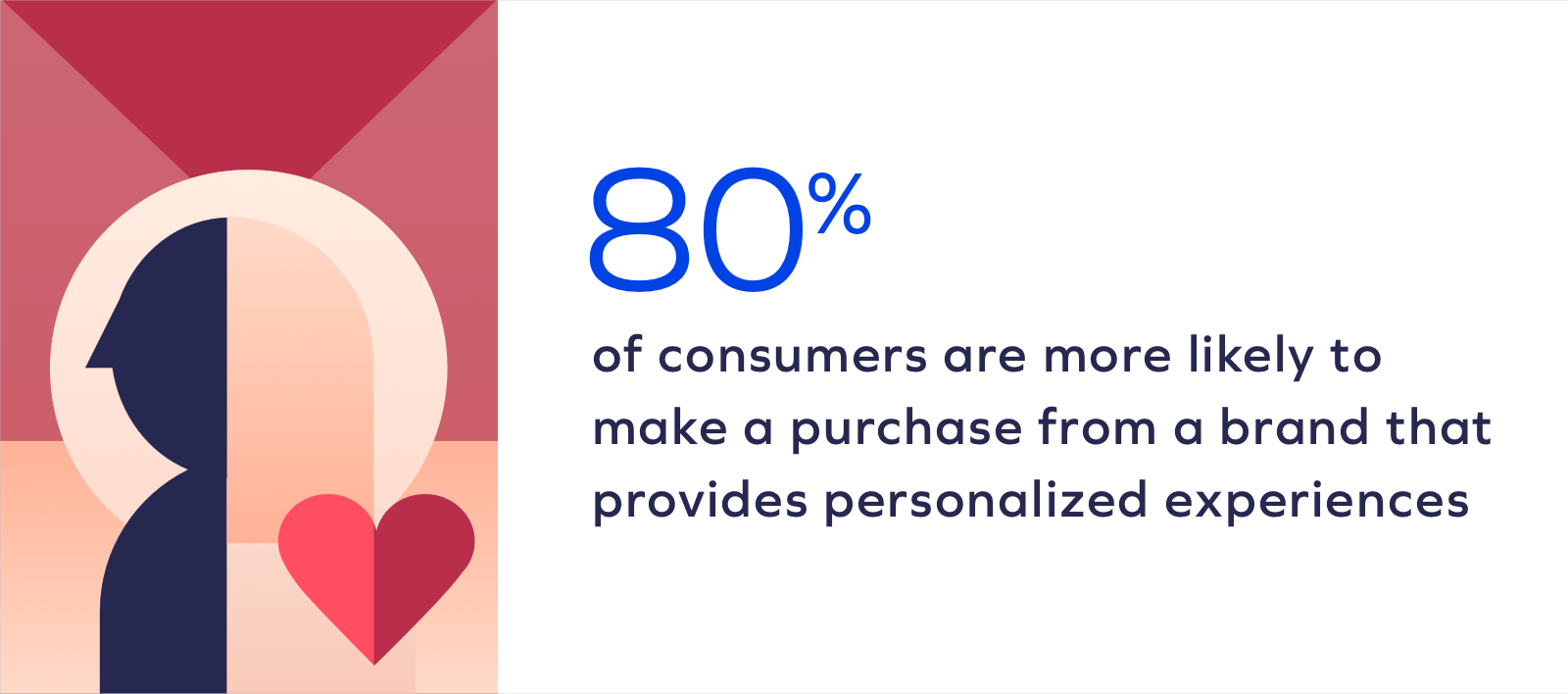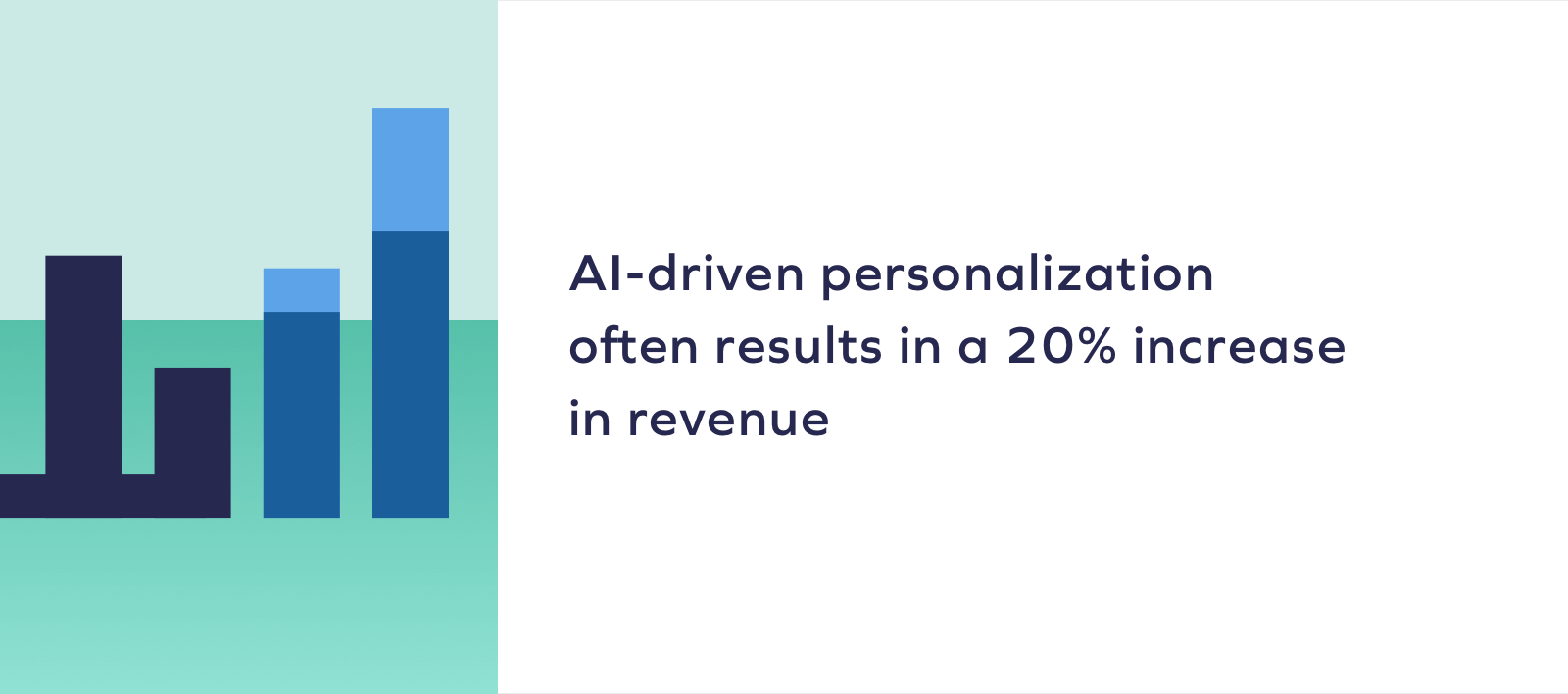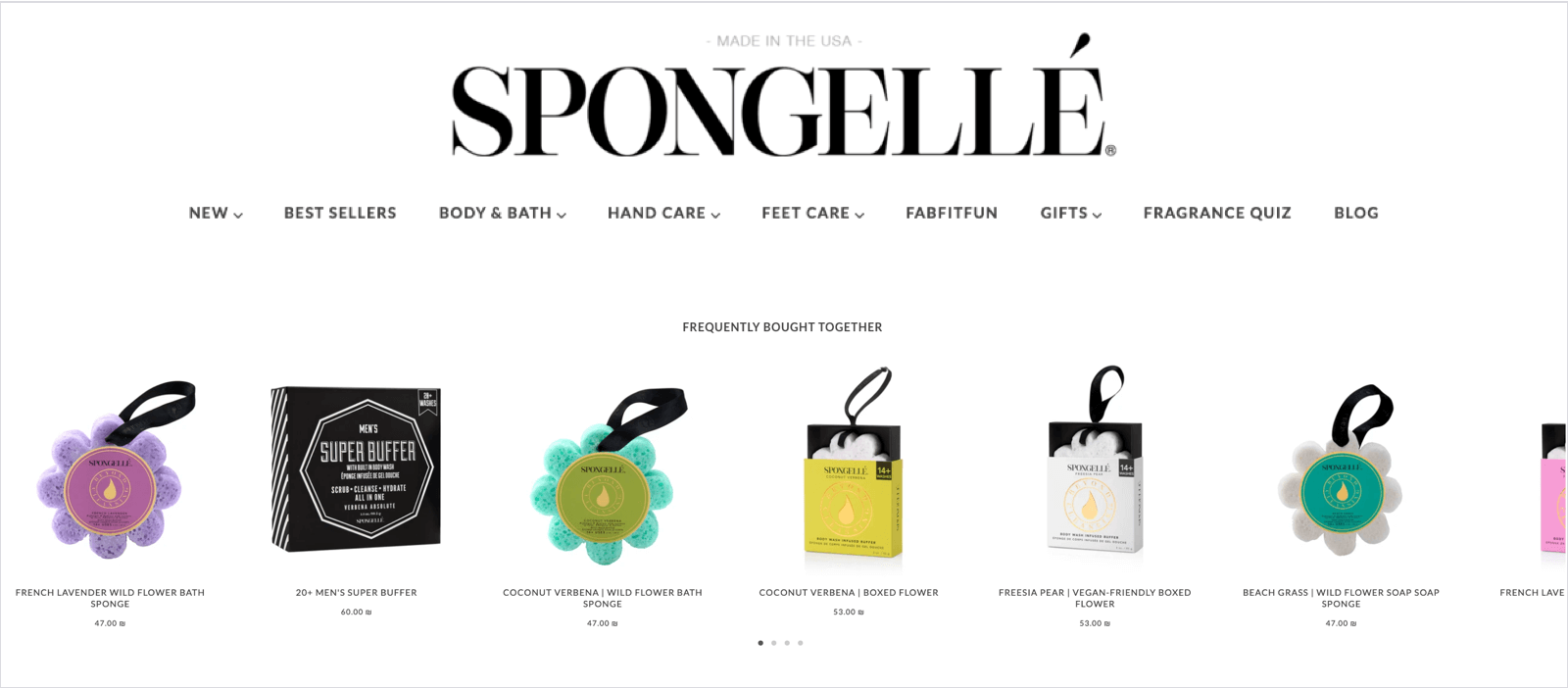Upsell With Personalized Product Recommendations
Personalization helps customers find the right products faster. We’ll dive into the different types of product recommendations, best practices, and how you can use them to grow sales.
 Product Page Guide
Product Page Guide
Personalization helps customers find the right products faster. We’ll dive into the different types of product recommendations, best practices, and how you can use them to grow sales.
Personalized recommendations are a mutually beneficial arrangement between brands and consumers. Shoppers are able to more easily discover the products they like, and brands make money in the process.
In this chapter, we’ll dive into the different types of product recommendations, best practices for implementing them, and how you can use them to grow sales.
Personalization has become ubiquitous in our lives. The TV shows and movies we select from on Netflix, what we see on social media, and the products that are recommended to us are all based on our behavior and interests.
Because of that ubiquity, personalization is table stakes for online shopping experiences. In fact, 80% of consumers are more likely to make a purchase from a brand that provides personalized experiences, according to Forbes.

Not all recommendation products include AI. In fact, the most basic recommendation tools require manual curation, providing simply another way to present your products on the page.
If you want to offer your customers personalized product recommendations, you need to use the right tools for the job. And that means relying on smart, AI-driven data.
Even once you start looking at AI platforms, it’s critical to understand both the how and the what: how the provider uses the data and how big a data set they’re leveraging. The results will be different, for example, if the platform is training from scratch versus using aggregated learnings that can further magnify your site performance.
The AI that drives platforms like LimeSpot allows brands to leverage mountains of data on a 1:1 basis, delivering highly targeted recommendations that customers will be most likely to buy. And because these tools learn as they collect more and more data, those predictions are continuously getting more and more accurate.
LimeSpot customers fully utilizing AI-driven personalization regularly see more than 20% increase in revenue and a 2-5x increase in conversion.

A mistake that a lot of retailers make is recommending too many products on one page. This leads to choice overload, which is when the presence of too many equivalent choices makes it difficult for a person to make a decision.
A famous study about jam illustrates this point well. Two jam sampling tables were set up in a grocery store: one with six varieties of jam, and one with 24. Unsurprisingly, the table with more choices attracted more customers (60%). But some results were surprising:
The 6-jam table converted more customers than the one that had 24. And with all of those choices, no one tasted more than two.
Customers don’t want endless choices. They want a few good choices. Delivering personalized choices will help you to boost your sales, and also to boost the money spent on each one.
When it comes to product pages, there are three types of personalized recommendations you should consider:
We have found this type of recommendation to be the best performer on product pages. It does require purchase data from your store in order to figure out what products to recommend, however. If your store is relatively new, there might not be enough information for the AI engine to recommend products that are frequently bought together.
This is the next best choice for a product page. It showcases the products with similar attributes to the item that is currently being viewed or purchased.
These recommendations capitalizes on quick changes in the Internet’s landscape by showing which of your items are getting the most traffic in real-time.
Other types of recommendations are best utilized in other areas of your site, including:
This will have the most impact on your homepage, where it can direct first-time visitors to the items that your customers love best.
Deliver personalized experiences on collection pages. A Curated Collection automatically changes the products in a collection based on a shopper’s behavior and Audience Segment.
While the above are guidelines, there’s no one-size-fits-all. If you work with a platform provider such as LimeSpot, their team will be able to provide you with best practices suited to your industry, site type and goals, A/B testing capabilities, and site specific recommendations.
Personalized product page recommendations lead to acquiring new customers, and growing the amount of each sale. Let’s take a look at how two brands boosted their bottom lines by implementing LimeSpot’s personalization solutions.
Canadian jewelry brand Olive + Piper wanted to increase conversions and maximize sales during peak seasons like Black Friday, Cyber Monday, and Christmas. The company was looking for a personalization technology with AI automation so that the system would handle the personalization and they could focus on getting orders out.
By using LimeSpot’s personalization AI technology to deliver real-time product recommendations, they were able to achieve the following results:
Eco-friendly personal care brand Spongellé needed a personalization platform to guide discovery across the entire customer journey, so they could show the right products to customers at the right time. Spongellé used LimeSpot to place popular items on the homepage, frequently bought together items on products pages, and most popular items from individual collections on collection pages. From the first touch point and all the way to the cart page, customers received personalized product recommendations, resulting in:

With so many eCommerce sites out there, it’s no surprise that customers want a way to quickly find what they want. Personalized product recommendations allow you to make product discovery easy, leading to better customer experiences with your brand, and more revenue for you.
